Die Bedeutung einer Schaufel für einen Bagger verstehen. In der Welt der Schwermaschinen sind Bagger für verschiedene Bau- und Aushubprojekte unverzichtbar. Diese leistungsstarken Maschinen sind mit einer Reihe von Anbaugeräten für verschiedene Aufgaben ausgestattet, und eines der wichtigsten dieser Anbaugeräte ist die Baggerschaufel. In diesem Artikel werden wir uns mit der Bedeutung einer Schaufel für einen Bagger befassen und ihre verschiedenen Aspekte untersuchen.
Was ist ein Eimer für eine Bagger?
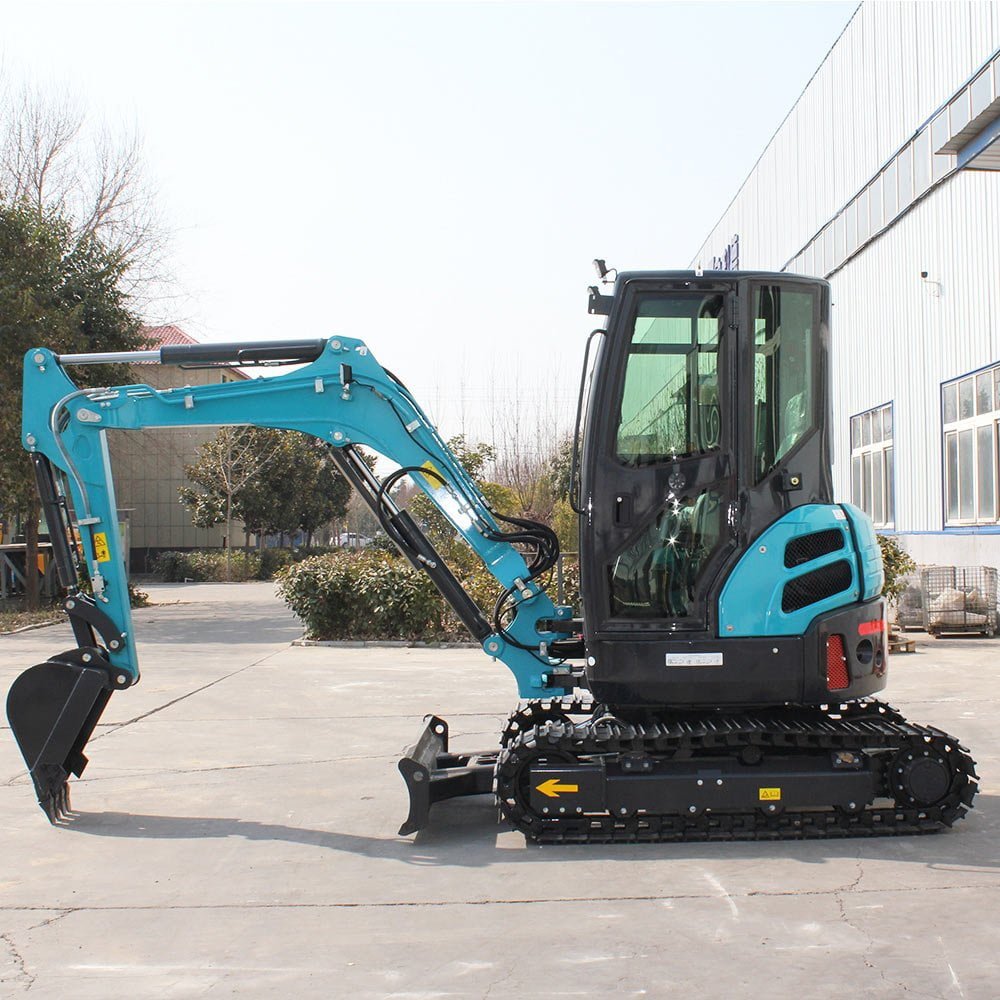
Ein kurzer Überblick
Eine Baggerschaufel ist eine Schlüsselkomponente dieser Maschinen und dient als Arbeitstier, das die schwere Arbeit erledigt. Schaufeln für Bagger gibt es in verschiedenen Formen und Größen, jede ist für einen bestimmten Zweck konzipiert. Sie bestehen normalerweise aus langlebigen Materialien wie Stahl, um den rauen Bedingungen standzuhalten, denen sie ausgesetzt sind.
Arten von Baggerschaufeln
Baggerschaufeln können grob in verschiedene Typen eingeteilt werden, darunter Baggerschaufeln, Grabschaufeln und Planierschaufeln. Jeder Typ hat unterschiedliche Merkmale und Anwendungen, wodurch sie für bestimmte Aufgaben geeignet sind. Das Verständnis dieser Unterschiede ist entscheidend, wenn Sie die richtige Schaufel für eine Arbeit auswählen.
Die richtige Wahl Bagger Eimer
Um das Thema „Auswahl der richtigen Baggerschaufel“ weiter zu vertiefen, ist es wichtig, tiefer auf die verschiedenen Faktoren einzugehen, die bei dieser wichtigen Entscheidung berücksichtigt werden müssen. Die Auswahl der geeigneten Baggerschaufel für eine bestimmte Aufgabe ist kein Einheitsproblem; es erfordert eine sorgfältige Bewertung mehrerer wichtiger Aspekte, um höchste Effizienz und Effektivität sicherzustellen. Im Folgenden werden wir die wichtigen Faktoren näher untersuchen, die bei der Auswahl der richtigen Baggerschaufel zu beachten sind:
Materialtyp
Die Art des Materials, mit dem Sie arbeiten werden, ist eine grundlegende Überlegung. Unterschiedliche Materialien wie Erde, Gestein oder Beton erfordern unterschiedliche Schaufelkonstruktionen. Wenn Sie beispielsweise in felsigem Gelände arbeiten, benötigen Sie möglicherweise eine Hochleistungsschaufel für Gestein mit verstärkten Zähnen, während eine Allzweckschaufel für die Handhabung von lockerem Boden besser geeignet ist. Um die richtige Wahl treffen zu können, ist es wichtig, die Härte, Abrasivität und Konsistenz des Materials zu kennen.
Eimerkapazität
Die Schaufelkapazität ist ein weiterer entscheidender Faktor. Sie bestimmt, wie viel Material die Schaufel in einer einzigen Schaufel aufnehmen kann. Die Auswahl der richtigen Kapazität gewährleistet effizientes Graben und minimiert die Notwendigkeit des häufigen Nachladens, was sowohl Zeit als auch Kraftstoff sparen kann. Die Schaufelkapazität wird normalerweise in Kubikyards oder Kubikmetern gemessen und sollte den Anforderungen des Projekts entsprechen.
Anhangsstil
Auch die Art der Befestigung der Schaufel ist ein wichtiger Aspekt. Verschiedene Befestigungsmethoden wie Bolzen, Schnellwechsler oder Hydraulikkupplungen bieten verschiedene Vorteile. Schnellwechsler ermöglichen beispielsweise einen schnellen und einfachen Schaufelwechsel, während Bolzenbefestigungen sicherer sind, der Wechsel jedoch länger dauert. Die Art der Befestigung sollte den Anforderungen Ihres Projekts und den Fähigkeiten des Baggers entsprechen.
Zähne und Schneidkanten
Das Design und die Qualität der Zähne und Schneidkanten der Schaufel sind entscheidend für effizientes Graben und Materialrückhalt. Die Wahl zwischen Standardzähnen, Felszähnen oder anderen Spezialoptionen hängt von der Art des Materials ab, mit dem Sie rechnen müssen. Langlebige und scharfe Zähne können die Leistung der Schaufel erheblich beeinflussen.
Zahnkonfiguration
Auch die Konfiguration der Schaufelzähne spielt eine Rolle für ihre Wirksamkeit. Berücksichtigen Sie Faktoren wie den Abstand zwischen den Zähnen, die Anzahl der Zähne und ihre Anordnung. Die Zahnkonfiguration kann sich auf die Penetration und Materialrückhaltung auswirken, daher ist es wichtig, die richtige Konfiguration für Ihren spezifischen Auftrag zu wählen.
Schaufelprofil und -form
Profil und Form der Schaufel sind auf bestimmte Aufgaben zugeschnitten. Eine Grabschaufel hat beispielsweise normalerweise ein schmales Profil, was sie ideal zum Graben schmaler Gräben macht, während eine Planierschaufel ein breiteres Profil hat, das für Nivellierungs- und Planierarbeiten geeignet ist. Die Form der Schaufel sollte den Anforderungen Ihres Projekts entsprechen.
Zusätzliche Merkmale
Einige Baggerschaufeln verfügen über zusätzliche Funktionen wie verschleißfeste Oberflächen, Seitenschneider oder Schaufelabdeckungen. Diese zusätzlichen Funktionen können die Haltbarkeit und Leistung der Schaufel verbessern. Beurteilen Sie, ob solche Funktionen für Ihr Projekt erforderlich sind oder ob eine Standardschaufel ausreicht.
Vorteile der Verwendung des richtigen Baggerlöffels
Um das Thema „Vorteile der Verwendung der richtigen Baggerschaufel“ weiter zu vertiefen, ist es wichtig, die Vorteile genauer zu untersuchen. Die Verwendung der geeigneten Baggerschaufel für eine bestimmte Aufgabe kann einen erheblichen Unterschied beim Ergebnis Ihres Aushub- oder Bauprojekts ausmachen. Lassen Sie uns tiefer auf die Vorteile der Auswahl der richtigen Baggerschaufel eingehen:
Erhöhte Produktivität
Die Auswahl der richtigen Baggerschaufel kann die Produktivität Ihres Projekts erheblich steigern. Wenn Sie den Schaufeltyp an das zu bearbeitende Material und die anstehende Aufgabe anpassen, arbeitet die Maschine effizienter. Das bedeutet weniger Durchgänge und schnellere Zykluszeiten, sodass Sie Aufgaben schneller erledigen und mehr Projekte annehmen können.
Reduzierter Verschleiß
Ein für die jeweilige Aufgabe geeigneter Baggerlöffel minimiert die Belastung der Maschine. Wenn Sie den richtigen Löffel verwenden, werden das Hydrauliksystem und die Strukturkomponenten des Baggers weniger beansprucht. Dies führt zu geringeren Wartungs- und Reparaturkosten, da die Maschine im Laufe der Zeit weniger Verschleiß erfährt.
Kosteneinsparungen
Bei der Wahl der richtigen Baggerschaufel geht es nicht nur um Leistungssteigerung, sondern auch um Kosteneffizienz. Die Verwendung der richtigen Schaufel bedeutet, dass Sie das richtige Werkzeug für die Arbeit verwenden, was den Kraftstoffverbrauch und die Betriebskosten senkt. Mit weniger Ausfallzeiten und geringeren Wartungskosten können Sie Ihren ROI maximieren.
Verbesserte Materialretention
Verschiedene Schaufeln sind mit speziellen Funktionen ausgestattet, um die Materialrückhaltung zu optimieren. Eine Felsschaufel hat beispielsweise verstärkte Zähne und ein robustes Design, um Steine effektiv zu sichern und zu handhaben. Wenn Sie eine Schaufel verwenden, die für das von Ihnen bearbeitete Material ausgelegt ist, stellen Sie sicher, dass Sie beim Graben weniger Material verlieren, was Zeit spart und Abfall reduziert.
Präzision und Genauigkeit
Die richtige Baggerschaufel verbessert die Präzision und Genauigkeit Ihrer Arbeit. Egal, ob Sie Gräben ausheben, Oberflächen planieren oder empfindliche Materialien handhaben, eine gut abgestimmte Schaufel sorgt dafür, dass Sie mit Finesse arbeiten können. Dies ist besonders wichtig für Aufgaben, die ein hohes Maß an Präzision erfordern.
Vielseitigkeit
Während die Wahl der richtigen Baggerschaufel für eine bestimmte Arbeit entscheidend ist, macht eine Vielzahl von Schaufeln für unterschiedliche Aufgaben Ihren Bagger vielseitiger. Mit der Möglichkeit, Schaufeln mithilfe eines Kupplungssystems schnell zu wechseln, können Sie problemlos zwischen Graben, Planieren und anderen Aufgaben wechseln und so die Effizienz Ihres Projekts weiter steigern.
Komfort und Sicherheit für den Bediener
Die Verwendung der richtigen Schaufel trägt zum Komfort und zur Sicherheit des Bedieners bei. Wenn die Ausrüstung optimal funktioniert, ist der Bediener weniger gestresst und ermüdet weniger. Darüber hinaus werden Sicherheitsrisiken minimiert, da die Ausrüstung wie vorgesehen funktioniert, wodurch die Gefahr von Unfällen oder Fehlfunktionen verringert wird.
Wartung und Pflege für Ihre Bagger Eimer
Um das Thema „Wartung und Pflege Ihrer Baggerschaufel“ weiter zu vertiefen, ist es wichtig, die Bedeutung einer ordnungsgemäßen Wartung zu betonen und ein umfassenderes Verständnis dafür zu vermitteln, wie Sie die Langlebigkeit und Wirksamkeit Ihrer Baggerschaufel sicherstellen können. Bei der Pflege Ihrer Schaufel geht es nicht nur darum, ihre Lebensdauer zu verlängern, sondern auch darum, während der gesamten Nutzung optimale Leistung aufrechtzuerhalten. Hier werden wir auf die spezifischen Maßnahmen und Überlegungen zur Wartung und Pflege Ihrer Baggerschaufel eingehen:
Regelmäßige Reinigung
Regelmäßiges Reinigen ist ein grundlegender Aspekt der Wartung von Baggerschaufeln. Entfernen Sie nach jedem Gebrauch Schmutz, Schlamm oder Materialrückstände von der Oberfläche und den Spalten der Schaufel. Eine saubere Schaufel ist nicht nur effizienter, sondern auch weniger anfällig für Korrosion und Beschädigungen. Das Vernachlässigen dieses einfachen Schrittes kann zu vorzeitigem Verschleiß führen.
Schmierung
Die richtige Schmierung ist entscheidend, damit die beweglichen Teile Ihrer Schaufel, wie Scharnierbolzen und Hydraulikanschlüsse, reibungslos funktionieren. Schmieren Sie diese Komponenten in den empfohlenen Abständen, um Reibung und übermäßigen Verschleiß zu vermeiden. Die Verwendung des richtigen Fetts oder Schmiermittels ist für die Langlebigkeit dieser Teile entscheidend.
Inspektionsverfahren
Regelmäßige Inspektionen sind unerlässlich, um Verschleiß, Schäden oder potenzielle Probleme frühzeitig zu erkennen. Überprüfen Sie bei der routinemäßigen Wartung die Zähne, Schneidkanten und Strukturkomponenten des Löffels auf Anzeichen von Verschleiß oder Beschädigung. Durch den rechtzeitigen Austausch abgenutzter oder beschädigter Teile können Sie in Zukunft umfangreichere und kostspieligere Reparaturen vermeiden.
Speicherpraktiken
Auch die Art und Weise, wie Sie Ihren Baggerlöffel lagern, wenn er nicht verwendet wird, spielt eine wichtige Rolle bei seiner Wartung. Bei der ordnungsgemäßen Lagerung wird der Löffel an einem trockenen, überdachten Ort aufbewahrt, um ihn vor Witterungseinflüssen zu schützen, die zu Rost und Korrosion führen können. Lagern Sie den Löffel nach Möglichkeit drinnen oder unter einem Schutzdach.
Reparatur und Austausch
Wenn Verschleiß und Schäden auftreten, ist es wichtig, diese umgehend zu beheben. Bei kleineren Problemen sollten Sie die Schaufel reparieren oder überholen, anstatt sie komplett auszutauschen. Das Ersetzen von Zähnen, das Schweißen beschädigter Bereiche oder die Wartung der Schneidkanten kann die Lebensdauer der Schaufel verlängern und Kosten senken.
Anpassen an die Herstellerrichtlinien
Hersteller geben für ihre Baggerschaufeln oft spezifische Wartungsrichtlinien an. Diese Empfehlungen müssen unbedingt genau befolgt werden. Diese Richtlinien enthalten Informationen zu Schmiermitteln, Inspektionsplänen und Wartungsverfahren, die auf das jeweilige Schaufelmodell zugeschnitten sind.
Schulung und Sensibilisierung der Bediener
Die ordnungsgemäße Wartung liegt nicht nur in der Verantwortung des Wartungsteams, sondern auch der Bediener. Stellen Sie sicher, dass die Gerätebediener mit der korrekten Bedienung und Pflege der jeweiligen Schaufel vertraut sind. Die Aufmerksamkeit der Bediener kann unbeabsichtigten Missbrauch verhindern, der zu vorzeitigem Verschleiß oder Schäden führen kann.
Vorbeugende Maßnahmen
Erwägen Sie neben der routinemäßigen Wartung auch vorbeugende Maßnahmen wie die Verwendung verschleißfester Materialien und das Anbringen von Schutzvorrichtungen wie Schaufelabdeckungen. Diese können die Lebensdauer der Schaufel erheblich verlängern und den Wartungsbedarf im Laufe der Zeit verringern.
Beliebte Baggerschaufelmarken
Baggerschaufeln werden von verschiedenen Herstellern hergestellt, aber nicht alle sind gleich. Wir stellen einige der Top-Marken vor, die für ihre Qualität und Langlebigkeit bekannt sind, und helfen Ihnen so, beim Kauf einer Schaufel für Ihren Bagger eine fundierte Entscheidung zu treffen.
Die Zukunft der Baggerschaufeln
Um das Thema „Die Zukunft der Baggerschaufeln“ weiter zu vertiefen, ist es wichtig, die laufenden Innovationen und Entwicklungen im Bereich der Konstruktion und Materialien von Baggerschaufeln zu untersuchen. Die Bau- und Aushubbranche entwickelt sich ständig weiter und mit ihr die in diesen Bereichen verwendeten Werkzeuge und Anbaugeräte. Hier werden wir uns mit den spannenden Fortschritten befassen, die die Zukunft der Baggerschaufeln prägen:
Materialinnovationen
Die in Baggerschaufeln verwendeten Materialien sind ein Schwerpunkt für die Zukunft. Hersteller erforschen und entwickeln fortschrittliche Legierungen und Verbundwerkstoffe, die überragende Festigkeit und Haltbarkeit bieten. Diese Materialien verlängern nicht nur die Lebensdauer der Schaufel, sondern tragen auch zu verbesserter Leistung und Effizienz bei. Darüber hinaus wird zunehmend Wert auf die Verwendung umweltfreundlicher und nachhaltiger Materialien gelegt, um die Umweltauswirkungen der Schaufelherstellung zu verringern.
Intelligente Eimer
Die Integration von Technologie in Baggerschaufeln ist ein Trend, der immer mehr an Dynamik gewinnt. Intelligente Schaufeln sind mit Sensoren und Überwachungssystemen ausgestattet, die Echtzeitdaten zu Schaufelverschleiß, -nutzung und -leistung liefern. Diese Daten können für die vorausschauende Wartung von unschätzbarem Wert sein und Bedienern und Wartungsteams dabei helfen, fundierte Entscheidungen zu treffen, um unerwartete Ausfälle zu verhindern und die Lebensdauer der Schaufel zu optimieren.
Automatisierung und Fernsteuerung
Baggerschaufeln werden zunehmend in automatisierten und ferngesteuerten Systemen eingesetzt. Dies erhöht nicht nur die Sicherheit, da weniger menschliche Anwesenheit in gefährlichen Umgebungen erforderlich ist, sondern ermöglicht auch präzisere und effizientere Abläufe. Die Zukunft birgt das Potenzial für eine noch ausgefeiltere Automatisierung, bei der Baggerschaufeln Aufgaben mit minimalem menschlichen Eingriff ausführen können.
3D-Druck
Der 3D-Druck revolutioniert die Herstellung von Baggerschaufeln. Diese Technologie ermöglicht komplexe und individuelle Schaufeldesigns, die bisher nur schwer zu realisieren waren. Der 3D-Druck erleichtert außerdem die schnelle Prototypenerstellung und verkürzt so die Entwicklungszeiten für neue Schaufelmodelle. Diese Innovation eröffnet Möglichkeiten für hochgradig maßgeschneiderte Schaufellösungen für verschiedene Aufgaben.
Energieeffiziente Eimer
Da die Umweltbedenken immer weiter zunehmen, liegt der Fokus bei der Zukunft von Baggerschaufeln auf Energieeffizienz. Hersteller arbeiten an Konstruktionen, die die Belastung des Hydrauliksystems und damit den Kraftstoffverbrauch reduzieren. Dies kommt nicht nur der Umwelt zugute, sondern senkt auch die Betriebskosten für Bau- und Aushubunternehmen.
Spezialisierte Task-Buckets
Baggerschaufeln werden in Zukunft immer spezialisierter für spezielle Aufgaben. Dieser Trend wird durch die Nachfrage nach effizienteren und präziseren Aushubarbeiten vorangetrieben. Ob Schaufeln für heikle archäologische Ausgrabungen oder Spezialschaufeln für Unterwassereinsätze – die Zukunft verspricht eine Reihe maßgeschneiderter Optionen.
Verbesserte Verschleißfestigkeit
Die Verschleißfestigkeit der Schaufel ist ein entscheidender Aspekt der Schaufelleistung. Zukünftige Baggerschaufeln werden voraussichtlich aus verschleißfesteren Materialien und Konstruktionen bestehen, die den Bedarf an häufigen Zahnwechseln und Wartungen minimieren. Dies wiederum reduziert Ausfallzeiten und Betriebskosten.
Fallstudien: Erfolgreiche Bucket-Anwendungen
Um das Thema „Fallstudien: Erfolgreiche Schaufelanwendungen“ weiter zu vertiefen, ist es wichtig, detaillierte und praxisnahe Beispiele zu liefern, wie die richtige Wahl der Baggerschaufel einen wesentlichen Unterschied beim Ergebnis von Bau- und Aushubprojekten ausmachen kann. Diese Fallstudien veranschaulichen, wie wichtig es ist, die richtige Schaufel für bestimmte Aufgaben auszuwählen und wie dies zu bemerkenswerten Ergebnissen führen kann:
Fallstudie 1: Effizientes Graben mit der richtigen Schaufel
In dieser Fallstudie wurde ein Bauunternehmen damit beauftragt, ein Netzwerk von Gräben für Versorgungsinstallationen in einem Wohngebiet auszuheben. Der erste Versuch mit einer Standardschaufel erwies sich als zeitaufwändig und ineffizient, da oft mehrere Durchgänge erforderlich waren, um die gewünschte Grabentiefe zu erreichen. Als das Team erkannte, dass eine Spezialschaufel erforderlich war, wechselte es zu einer Grabschaufel, die ein schmaleres Profil und ein effizienteres Grabdesign hatte. Diese Änderung verbesserte die Produktivität erheblich. Die Grabschaufel reduzierte die Grabzeit um über 301 TP3T und gewährleistete eine gleichmäßige Grabentiefe, was zu einem erfolgreichen und pünktlichen Abschluss des Projekts führte.
Fallstudie 2: Felsabbau leicht gemacht
Ein Bergbaubetrieb musste große Mengen Gestein ausheben, um Mineralien zu gewinnen. Anfangs war das Projekt mit Herausforderungen verbunden, da Standardschaufeln mit dem harten und abrasiven Gestein nicht zurechtkamen. Nach der Umstellung auf Schwerlastschaufeln mit verstärkten Zähnen und verschleißfesten Materialien wurde der Aushubprozess deutlich effizienter. Die Spezialschaufel verbesserte nicht nur die Grabgeschwindigkeit, sondern musste auch weniger Zähne ausgetauscht werden, was Zeit und Wartungskosten sparte. Diese Fallstudie unterstreicht, wie wichtig es ist, für das jeweilige auszuhebende Material die richtige Schaufel zu verwenden.
Fallstudie 3: Präzisionsplanierung mit einer Planierschaufel
Ein Landschaftsbauunternehmen übernahm ein Projekt, das eine präzise Nivellierung für einen neuen Sportplatz erforderte. Die ersten Versuche mit einer Allzweckschaufel führten zu ungleichmäßiger und inkonsistenter Nivellierung, was zu Verzögerungen und Frustration führte. Der Wechsel zu einer Planierschaufel mit breitem und flachem Profil, die speziell für Nivellierungsaufgaben entwickelt wurde, führte zu einer bemerkenswerten Veränderung. Die Planierschaufel sorgte mit minimalem Aufwand für eine glatte und ebene Oberfläche und reduzierte den Bedarf an manuellen Nachbesserungen erheblich. Das Projekt wurde pünktlich und mit außergewöhnlicher Qualität abgeschlossen.
Fallstudie 4: Handhabung großer Materialmengen
Ein groß angelegtes Bauprojekt, bei dem große Mengen loser Erde bewegt werden mussten, erforderte eine effiziente Lösung für den Materialumschlag. Zunächst wurden bei dem Projekt Standardschaufeln verwendet, die langsam waren und nur eine begrenzte Kapazität hatten. Durch die Umstellung auf Hochleistungsschaufeln, die für den Schüttgutumschlag konzipiert sind, wurde die Effizienz drastisch verbessert. Diese Spezialschaufeln reduzierten die Anzahl der zum Bewegen des Materials erforderlichen Durchgänge, was zu erheblichen Zeit- und Kraftstoffeinsparungen führte. Der erfolgreiche Abschluss des Projekts innerhalb des geplanten Zeitrahmens unterstrich, wie wichtig es ist, die richtige Schaufel für Aufgaben mit großem Volumen auszuwählen.
Die Umweltauswirkungen von Bagger Eimer
Um das Thema „Umweltauswirkungen von Baggerschaufeln“ weiter zu vertiefen, ist es wichtig, tiefer in die Umweltaspekte bei der Herstellung und Verwendung dieser wichtigen Bauwerkzeuge einzutauchen. Da die Umweltbedenken weiter zunehmen, ist es von entscheidender Bedeutung zu verstehen, wie sich Baggerschaufeln auf die Umwelt auswirken können und welche Schritte zur Minderung dieser Auswirkungen unternommen werden. Lassen Sie uns die verschiedenen Aspekte der Umweltauswirkungen von Baggerschaufeln untersuchen:
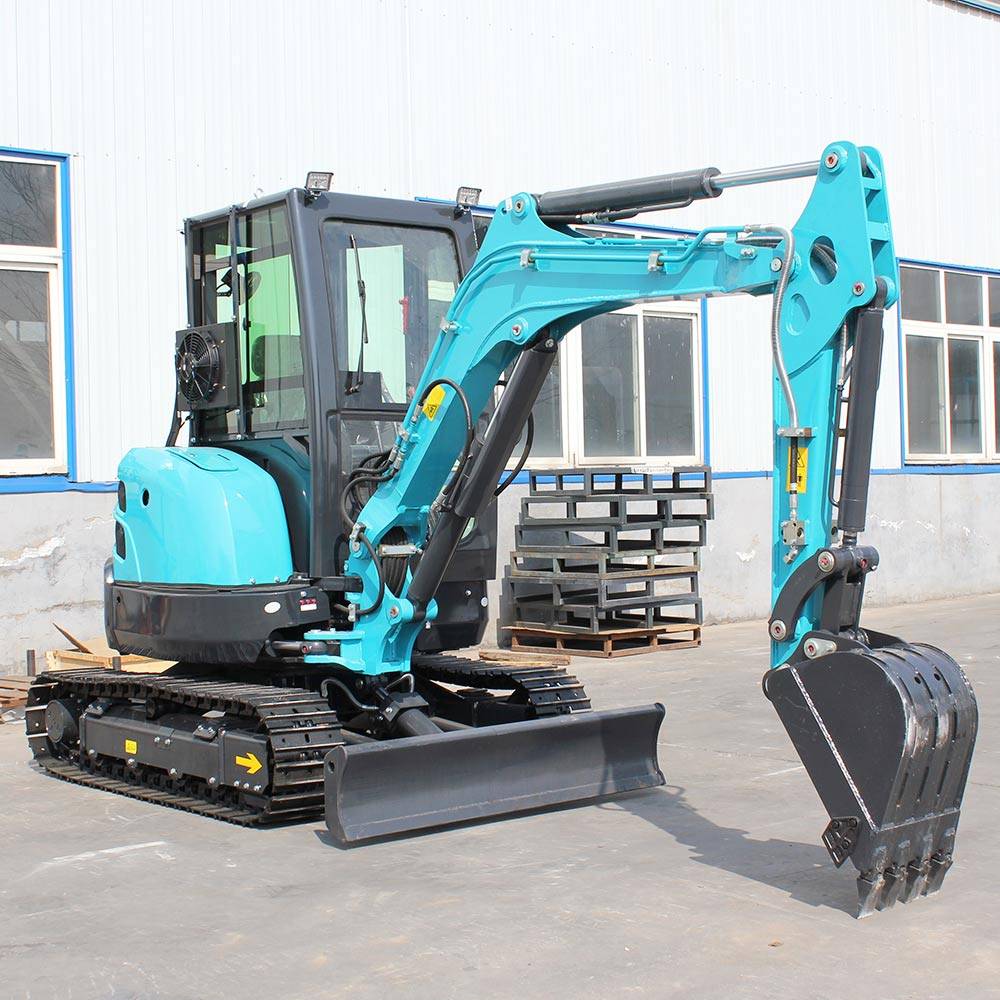
Nachhaltige Materialien
Einer der wichtigsten Schritte zur Reduzierung der Umweltbelastung durch Baggerschaufeln ist die Verwendung nachhaltiger und umweltfreundlicher Materialien. Hersteller greifen bei der Schaufelherstellung zunehmend auf recycelte und wiederverwertbare Materialien zurück. Diese Materialien reduzieren nicht nur den ökologischen Fußabdruck, sondern fördern durch die effektive Wiederverwendung von Ressourcen auch eine Kreislaufwirtschaft.
Energieeffiziente Fertigung
Der Herstellungsprozess von Baggerschaufeln wird immer energieeffizienter. Ein geringerer Energieverbrauch während der Herstellung trägt zur Senkung der Treibhausgasemissionen bei. Hersteller erkunden außerdem erneuerbare Energiequellen für ihren Betrieb, was weiter zu einer Reduzierung des CO2-Fußabdrucks beiträgt.
Gewichtsreduzierung und Materialoptimierung
Innovationen bei der Materialoptimierung führen zu leichteren und dennoch äußerst langlebigen Schaufeln. Die Gewichtsreduzierung der Schaufeln trägt dazu bei, den Kraftstoffverbrauch der Bagger während des Betriebs zu senken. Der Einsatz fortschrittlicher technischer Verfahren und Materialien zur Erreichung dieses Ziels ist ein wesentlicher Aspekt der ökologischen Nachhaltigkeit.
Längere Lebensdauer
Die Lebensdauer von Baggerschaufeln zu verlängern ist eine umweltbewusste Maßnahme. Langlebige Materialien und Konstruktionsmerkmale, die den Verschleiß minimieren, können die Häufigkeit des Schaufelaustauschs erheblich reduzieren. Dies spart nicht nur Ressourcen, sondern verringert auch den Abfall, der durch weggeworfene Schaufeln entsteht.
Umweltfreundliche Beschichtungen
Einige Hersteller verwenden umweltfreundliche Beschichtungen und Lacke für ihre Eimer. Diese Beschichtungen schützen den Eimer nicht nur vor Korrosion, sondern haben bei der Anwendung und Entsorgung auch nur minimale Auswirkungen auf die Umwelt.
Effizientes Materialhandling
Die Wahl des richtigen Löffels für die jeweilige Aufgabe ist entscheidend, um die Umweltbelastung zu reduzieren. Die Verwendung eines Löffels, der für die jeweilige Aufgabe und den Materialtyp geeignet ist, minimiert unnötige Ausgrabungen und verringert die Störung natürlicher Umgebungen und Lebensräume.
Recycling und Wiederverwendung
Viele gebrauchte Eimer können recycelt oder für andere Zwecke wiederverwendet werden, wodurch Abfall reduziert wird. Dieser umweltfreundliche Ansatz reduziert den Bedarf an neuen Materialien und minimiert den ökologischen Fußabdruck der Branche.
Umweltbewusste Produktionsstätten
Hersteller setzen in ihren Betrieben zunehmend umweltbewusste Praktiken um. Dazu gehören die ordnungsgemäße Abfallentsorgung, Wassereinsparung und Emissionskontrollmaßnahmen. Solche Praktiken tragen zu einem umweltfreundlicheren Herstellungsprozess bei.
Sicherheitsaspekte
Um das Thema „Sicherheitsaspekte“ weiter zu vertiefen, ist es wichtig, tiefer auf die spezifischen Sicherheitsmaßnahmen und Richtlinien einzugehen, die für den Betrieb von Baggerschaufeln unerlässlich sind. Bei Aushub- und Bauarbeiten kommen oft schwere Maschinen zum Einsatz, weshalb Sicherheit ein vorrangiges Anliegen ist. Lassen Sie uns die verschiedenen Aspekte der Sicherheitsaspekte beim Einsatz von Baggerschaufeln im Detail untersuchen:
Geräteinspektion
Vor dem Einsatz einer Baggerschaufel ist eine umfassende Geräteinspektion unerlässlich. Dazu gehört die Überprüfung des Gesamtzustands des Baggers, der Hydraulik, der Schaufelbefestigung und der Sicherheitsfunktionen. Alle Anzeichen von Verschleiß, Beschädigung oder Fehlfunktion sollten umgehend behoben werden, um Unfälle zu vermeiden.
Bedienerschulung
Eine angemessene Schulung ist für jeden, der einen Bagger und die dazugehörigen Schaufeln bedient, unerlässlich. Die Bediener sollten nicht nur in der sicheren Bedienung der Geräte geschult werden, sondern auch die Fähigkeiten und Grenzen der jeweiligen Schaufel kennen. Dieses Wissen ist für die Unfallverhütung von entscheidender Bedeutung.
Stabilitätsbewertung
Bagger müssen auf stabilem und ebenem Untergrund aufgestellt werden, um ein Umkippen oder Überschlagen zu verhindern. Um die Stabilität zu gewährleisten, ist es wichtig, die Gewichtsverteilung der Maschine zu kennen und die Richtlinien des Herstellers für einen sicheren Betrieb einzuhalten.
Überlastung vermeiden
Das Überladen der Schaufel mit zu viel Material kann zur Instabilität und zum Umkippen des Geräts führen. Bediener sollten sich der Kapazität der Schaufel bewusst sein und vermeiden, diese zu überschreiten. Dies verhindert Unfälle und gewährleistet einen sicheren Betrieb.
Kommunikation
Eine effektive Kommunikation zwischen dem Gerätebediener und dem Bodenpersonal ist von entscheidender Bedeutung. Handzeichen, Funkgeräte oder andere Kommunikationsmethoden sollten verwendet werden, um sicherzustellen, dass klare und genaue Anweisungen ausgetauscht werden. Dies hilft, Unfälle zu vermeiden und erhöht die Sicherheit auf der Baustelle.
Vermeidung von Hochrisikosituationen
Bestimmte Szenarien, wie z. B. der Betrieb in der Nähe von Stromleitungen, steilen Hängen oder instabilem Gelände, stellen ein höheres Risiko dar. Diese Situationen erfordern besondere Vorsicht und es sollten spezielle Sicherheitsprotokolle, einschließlich zusätzlicher Sicherheitsbarrieren und Geräteprüfungen, umgesetzt werden.
Sicherheitsausrüstung
Alle Mitarbeiter auf der Baustelle, einschließlich der Gerätebediener, sollten geeignete Sicherheitsausrüstung wie Schutzhelme, Warnwesten und Sicherheitsschuhe mit Stahlkappen tragen. Persönliche Schutzausrüstung (PSA) spielt eine entscheidende Rolle bei der Vermeidung von Verletzungen.
Ladungssicherung
Eine ordnungsgemäße Ladungssicherung in der Schaufel ist unerlässlich, um zu verhindern, dass während des Betriebs Material herunterfällt. Dadurch wird die Sicherheit der Arbeiter und Passanten auf der Baustelle gewährleistet.
Wartung und Reparatur
Regelmäßige Wartung und rechtzeitige Reparaturen der Baggerschaufel sind für die Sicherheit von entscheidender Bedeutung. Wenn sichergestellt wird, dass alle Komponenten, einschließlich Zähne und Schneidkanten, in gutem Zustand sind, wird das Risiko von Unfällen und unerwarteten Geräteausfällen minimiert.
Sicherer Schaufelwechsel
Beim Schaufelwechsel ist besondere Vorsicht geboten, um Unfälle zu vermeiden. Dieser Vorgang muss gut koordiniert erfolgen und es muss sichergestellt werden, dass die Maschine sicher ist, das Anbaugerät ordnungsgemäß verriegelt ist und dass sich kein Personal im Bereich aufhält.
Notfallmaßnahmen
Bediener und Baustellenpersonal sollten mit Notfallmaßnahmen vertraut sein. Dazu gehört auch, dass sie wissen, wie sie auf Gerätestörungen, Unfälle oder Zwischenfälle mit der Schaufel reagieren müssen. Schnelle und effiziente Reaktionen können weiteren Schaden und weitere Verletzungen verhindern.
DIY-Eimer-Modifikationen
Um das Thema „DIY-Schaufelmodifikationen“ weiter zu vertiefen, ist es wichtig, ein umfassenderes Verständnis dafür zu vermitteln, wie Einzelpersonen ihre Baggerschaufeln sicher und effektiv anpassen können, um sie besser an bestimmte Aufgaben anzupassen. Obwohl es wichtig ist, anzuerkennen, dass alle Modifikationen mit Sorgfalt und unter Berücksichtigung der Sicherheit vorgenommen werden sollten, gibt es mehrere Aspekte der DIY-Schaufelmodifikationen, die untersucht werden sollten:
Die Aufgabe verstehen
Bevor Sie mit der Umgestaltung Ihres Löffels beginnen, müssen Sie sich über die jeweilige Aufgabe oder die Anforderungen im Klaren sein. Berücksichtigen Sie Faktoren wie die Art des zu bearbeitenden Materials, die erforderliche Grabtiefe und etwaige besondere Herausforderungen, die die Aufgabe mit sich bringt. Dieses Verständnis wird Ihre Umgestaltungsentscheidungen leiten.
Beratung und Expertenrat
Wenn Sie keine Erfahrung mit Umbauten an schweren Maschinen haben, ist es sehr empfehlenswert, fachkundigen Rat einzuholen. Konsultieren Sie Fachleute, die sich mit Baggerschaufeln und deren Konstruktion auskennen. Sie können Ihnen Einblicke in die Durchführbarkeit und Sicherheit Ihrer geplanten Umbauten geben.
Sicherheit zuerst
Sicherheit sollte bei selbst vorgenommenen Schaufelmodifikationen immer oberste Priorität haben. Stellen Sie sicher, dass die von Ihnen vorgenommenen Änderungen weder die strukturelle Integrität der Schaufel noch die Sicherheit des Bedieners und der in der Nähe befindlichen Personen beeinträchtigen. Schweiß- oder Schneidarbeiten sollten von qualifizierten Fachleuten durchgeführt werden, und die Modifikationen sollten vor der Verwendung gründlich überprüft werden.
Common DIY Modifications
There are several common DIY bucket modifications that operators might consider based on their specific needs:
- Tooth Attachments: Adding or changing bucket teeth to suit different materials can enhance digging efficiency.
- Cutting Edge Modifications: Altering the cutting edge to be sharper or more robust can impact digging performance and wear resistance.
- Bucket Shrouds: Installing protective shrouds on the bucket’s sides can reduce wear and extend the bucket’s lifespan.
- Bucket Extensions: Extending the sides or the bottom of the bucket can increase capacity and improve material retention.
Equipment Compatibility
Ensure that any modifications you make are compatible with your excavator model. Modifying the bucket in a way that is not supported by the equipment’s specifications can lead to safety hazards and operational problems.
Testing and Calibration
After making DIY modifications, it’s essential to test the bucket’s performance in controlled conditions before using it on a job site. Ensure that the changes you’ve made align with your initial objectives and meet safety standards.
Regular Inspection and Maintenance
Once your modified bucket is in use, regular inspections and maintenance are crucial. Monitor the modified components for signs of wear and tear, and address any issues promptly to maintain safety and efficiency.
Aufzeichnungen
Keep detailed records of the modifications made to your excavator bucket. This documentation can be invaluable for future reference, maintenance, and safety assessments.
Fazit
In conclusion, excavator buckets play a pivotal role in construction and excavation work, and selecting the right bucket is essential for efficiency, safety, and project success. The considerations outlined in this article, from safety and maintenance to environmental impact and DIY modifications, reflect the multifaceted nature of this critical tool. As the construction and excavation industries continue to evolve, it’s crucial for professionals to stay informed about the latest innovations, safety guidelines, and sustainable practices to ensure that excavator buckets remain a reliable and eco-friendly asset for their projects. By making informed choices and prioritizing safety and sustainability, operators can maximize the effectiveness of their excavator buckets while minimizing their impact on both the environment and their bottom line.
FAQs
1. Are excavator buckets interchangeable between different brands of Bagger?
- Excavator buckets are usually designed for specific makes and models, so it’s essential to choose one that is compatible with your machine.
2. What is the typical lifespan of an excavator bucket?
- The lifespan of an excavator bucket varies depending on usage, maintenance, and the type of tasks it’s used for. With proper care, a bucket can last for several years.
3. Can I weld or modify my excavator bucket myself?
- While DIY modifications are possible, it’s crucial to consult the manufacturer’s guidelines and consider safety regulations before attempting any changes to your bucket.
4. How do I know which type of bucket is suitable for my excavation project?
- Factors like the material you’re working with, the required digging depth, and the specific task at hand will determine the best type of bucket for your project.
5. Are there eco-friendly options for excavator buckets?
- Yes, some manufacturers offer eco-friendly bucket options made from recycled materials or designed for minimal environmental impact. Be sure to research and inquire about these choices when purchasing a bucket.

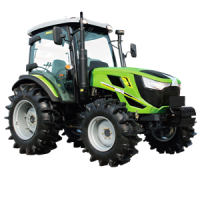
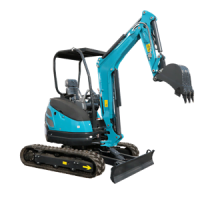
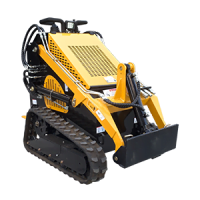

-1.png)